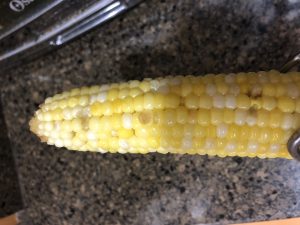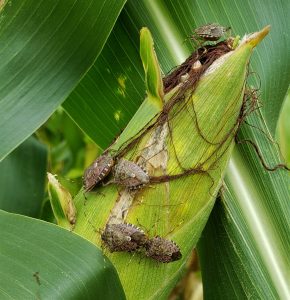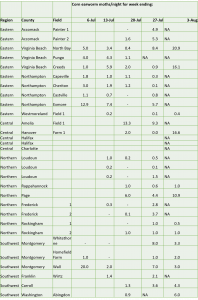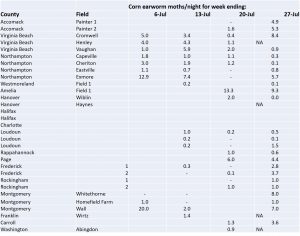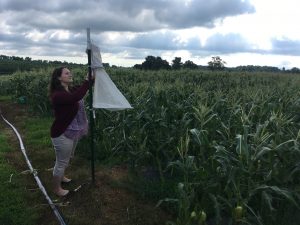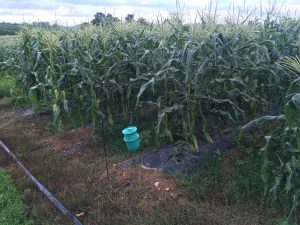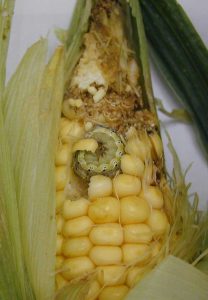Corn earworm moth catch data from sweet corn farms in Virginia can be found in the table below. In summary, corn earworm moth activity increased dramatically this week at several locations including lower Northampton County, Westmoreland County in the Northern Neck, Amelia County, Hanover County, and Frederick County. Moth activity is quite variable right now, and should certainly be monitored carefully in the coming weeks. We still have caught very few fall armyworm moths in our traps around Virginia; however, it should be noted that the Amelia County Farm averaged 5.5 FAW moths per night, which is the highest of any trap this season so far. So, a late flight of this pest appears to have reached some part of Virginia.
In an effort to fend off pyrethroid insecticide resistance development in our corn earworm populations, rotating to another insecticide than a Class 3 (pyrethroid) is highly encouraged for at least one spray. Diamide insecticides such as Coragen or Besiege (although it includes lambda-cy with the diamide), the carbamate Lannate LV, or the spinosyn Blackhawk, are all effective rotational insecticide options.
I want to once again thank Helene Doughty at the ESAREC and all of the VCE agents that are monitoring these pests on sweet corn farms in 17 different counties in Virginia: Phil Blevins (Washington Co. – See Photograph below); Chris Brown (Franklin Co.); Jason Cooper (Rockingham Co.); Ursula Deitch (Northampton Co.); Roy Flanagan (VA Beach); Kenner Love (Page and Rappahannock Co.); Laura Maxey Nay (Hanover Co.); Steve Pottorff (Carrol Co.); Stephanie Romelczyk (Westmoreland Co.); Beth Sastre-Flores (Loudoun Co.); Laura Siegle (Amelia Co.); Rebekah Slabach (Halifax Co.); and Mark Sutphin (Frederick Co.).

Corn earworm moth catch in pheromone-baited Heliothis traps around Virginia for week ending August 24, 2018.




